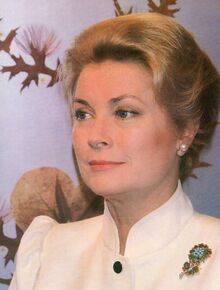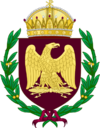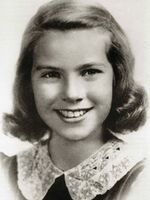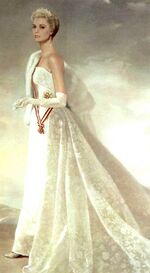Diana I Anicia: Difference between revisions
m (→Ancestry) |
m (→Ancestry) |
||
| Line 159: | Line 159: | ||
|5= 5. [[Joanna I of Latium]] | |5= 5. [[Joanna I of Latium]] | ||
|6= 6. [[Prince Henri, Duke of Épernon]] | |6= 6. [[Prince Henri, Duke of Épernon]] | ||
|7= 7. Adalinda of | |7= 7. Adalinda of Nyrundy | ||
|8= 8. Michael Anicius, Duke of Beroea | |8= 8. Michael Anicius, Duke of Beroea | ||
|9= 9. Syagria Julia | |9= 9. Syagria Julia | ||
| Line 166: | Line 166: | ||
|12= 12. [[Victor of Ghant|Prince Victor of Ghant]] | |12= 12. [[Victor of Ghant|Prince Victor of Ghant]] | ||
|13= 13. [[Catherine I of Lyncanestria]] | |13= 13. [[Catherine I of Lyncanestria]] | ||
|14= 14. George | |14= 14. George VI of Nyrundy | ||
|15= 15. | |15= 15. Ludmilla of Tungria | ||
|16= 16. Thomas Anicius, Duke of Beroea | |16= 16. Thomas Anicius, Duke of Beroea | ||
|17= 17. Patricia Ostia | |17= 17. Patricia Ostia | ||
| Line 180: | Line 180: | ||
|26= 26. [[Philippe V of Lyncanestria|Philip V of Lyncanestria]] | |26= 26. [[Philippe V of Lyncanestria|Philip V of Lyncanestria]] | ||
|27= 27. [[Princess Thérèse of Burgoy]] | |27= 27. [[Princess Thérèse of Burgoy]] | ||
|28= 28. | |28= 28. William III of Garima | ||
|29= 29. | |29= 29. Matilda of Waadt | ||
|30= 30. | |30= 30. Albert V of Tungria | ||
|31= 31. | |31= 31. Louisa of Vandalia | ||
}} | }} | ||
Revision as of 02:58, 31 January 2020
| Diana Augusta | |||||
|---|---|---|---|---|---|
 Court photograph of Diana taken in 1990 | |||||
| Latin Empress (more...) | |||||
| Reign | 12 April 1945 – 1 January 2000 | ||||
| Coronation | 24 December 1950 | ||||
| Predecessor | Constantine XIX | ||||
| Successor | Jason VI Augustus | ||||
| Regent | See list
| ||||
| Co-monarch | Jason VI Augustuss (1997–2000) | ||||
| Consuls | See list
| ||||
| Born | 12 November 1933 Palatium Purpura, Ascanium, Latium | ||||
| Spouse | |||||
| Issue see details... | |||||
| |||||
| House | Anicia | ||||
| Father | Constantine XIX | ||||
| Mother | Marie Christine of Épernon | ||||
| Religion | Fabrian Catholic | ||||
| Latin Imperial Family |
|---|
 |
|
Extended imperial family |
Diana Augusta (Diana Anicia Maria Theodora Constantina Caesaris Augusta; b. 12 November 1933) was the 116th monarch of the Latin Empire, and the fifth woman to serve as monarch in her own right. She reigned from 1946 until her abdication in 2000, making her one of Latium's longest reigning monarchs. Her rule began under a regency in 1945, which lasted until 1951. Her eldest son Jason VI Augustus served as co-ruler with Diana from 1997 until her abdication in 2000.
Diana is the eldest child of Emperor Constantine XIX and Empress Marie Christine. At the point of her birth, she was first in the line of succession; this changed after the birth of her two brothers John and Michael. She had not yet entered public life when her mother, father and brothers were executed by Consul Orestes Cotta and the VMNO in 1945. Diana and her younger sister Zoe were sparred from the same fate as their family as they were traveling from a visit to their grandmother's home in rural Sorrentia to Ascanium.
Diana was a key figure throughout the Social War, being proclaimed to Empress regnant by The Duke of Adrianople and loyal elements of the Latin armed forces. Though only a young girl, she was seen as a stabilizing figure during the war, often present at military camps, refugee centers, and other public appearances that greatly improved moral for the Imperial cause throughout the war. At the war's conclusion she called for the Utica War Crime Trials for members of the Latin Social Republic – mostly its high command.
Diana's reign is often considered to be a turning point in Latin history, and one of monumental constitutional reform. Early in Diana's reign, she issued an Imperial Edict to begin constitutional reform, which became the Acts of Constitutional Reform. Most point to three crowning achievements of Diana's reign, including the enactment of universal suffrage; introduction of universal healthcare; and the creation of the Belisarian Community and continental integration.
She faced a great deal of pressure to get married at the end of her regency, with some Senators calling for her coronation to be postponed until she married. Diana was betrothed to Leo Claudius, Marchis Philadephia, son of eldest son of prominent nobleman, politician, general and Social War hero The Duke of Adrianople, since 1945, but repeatedly pushed against the match throughout regency. She and Claudius married on 8 June 1952. Diana and Leo's early marriage is said to have been a struggle for each, as Diana also struggled through a stillbirth and death of her first born. Together the couple had seven surviving children: Isabella, Jason, Theodosius, Isadora, John, Joanna, and Eirene.
Early Life
Diana was born on 12 November 1933 at Palatium Purpura as the first child and daughter of Constantine XIX and his wife Marie Christine of Lyncanestria. Born during the reign of her father, Diana was awarded the title ''Born in the Purple'' to use throughout her life. She was baptized at Sacra Basilica de Angeli Gabriel in Castellum by Archbishop Menas Aternius of Castellum on Christmas Day in 1933. Her godparents were Robert VI of Lyncanestria (her mother's uncle); Princess Françoise-Athénaïs of Épernon (her mother's sister); Empress Dowager Alexandra (her father's grandmother); and Praetorian Prefect John Keroularios (her father's friend). She was often called "Dee" or "Didi" by her close family, her father in particular, who is said to have cherished Diana from an early age. Diana had three younger siblings: John, Michael and Zoe who were born in 1934, 1937 and 1938 respectively. Zoe was Diana's only sibling to survive to adulthood.
Diana was primarily educated by her mother and primarily her governess, Eirene Fourlia, whom Diana states she was extremely fond of growing up. Her education focused on lessons in language, literature and history, with Diana proclaiming Fourlia was key in instilling a love of classics early in her childhood. Diana occasionally received lessons on law as she neared her teenage years, with a heavy focus on the constitution throughout her regency. Diana grew up speaking her native Latin, as well as Imbrosian, and Audonian due to her mother's Lyncanestrian nationality. Diana was said to have had tutors in each of Imbrosian and Audonic, though excelled in languages. As a child, Diana's tutors referred to her as "your average, playful little girl, but with a certain sensibility" even at a young age.
Social War
April 1945 coup
Diana was visiting her great-grandmother Alexandra's villa in rural county Appennina, along with her younger sister, Zoe, when she first heard news of the coup and assassination of Emperor Constantine XIX, brothers, and capture of her mother by then Consul Orestes Cotta. Reportedly, Diana and her sister were to travel back to Ascanium and return by April 12, though were delayed by the weather and vehicles needing repair. Due to the remoteness of Dowager Empress Alexandra's estate, the Imperial convoy was not notified of the Emperor's demise until the morning of April 13 when they reached Ostia. Little has been discussed by Diana or written historians about what transpired after Cotta's announcement, but what is known is that the The Duke of Adrianople left Adrianople with the 7th Legion, and 18th Legion on April 14, with little certainty of his destination due to news of the siege in Olympia where his son was a cadet. On April 18, the Duke encountered Diana and her retainers outside of Iuvavum rural central Latium.

At Iuvavum, Diana and Claudius are first believed to have met, resulting in Claudius pledging his armies to the Imperial cause, which included nearly all of western and southern Latium. Though Diana had gained most of the military and state apparatus in the west, Cotta and republican forces announced that Diana and the Imperials must surrender by April 22 or Empress Marie Christine would be executed. The surrender never occurred and Marie Christine was executed on April 22. Diana once said in an interview that the decision "weighed" on her even fifty years later.
Diana was proclaimed Latin Empress by The Duke of Adrianople and the 7th Legion outside of Castellum on April 21, noticeably in defiance of republican demands. The event was broadcast on radio. At midnight on April 22, the Alban garrison in Castellum, under the command of Deputy Urban Prefect Felix Verruscosi, surrendered and pledged support to the Imperial war effort. Days later, Diana made her first television broadcast as Empress, which she declared Castellum her capital and asked for support of all Latins and members of the international community. According to post-war investigations and first-hand accounts, Diana's composure during the broadcast "shocked Cotta to his core" and sent him into a fit of rage.
Battle of Castellum
At Jason Claudius, Duke of Adrianople's suggestion and urging, Diana remained in Castellum for the remained in Castellum at the Palace of Augustus throughout April; this was reportedly cause of controversy among high ranking members of court and even Dowager Empress-Regent Alexandra; however Princess Zoe and others were sent to Adrianople. Imperial court was forced out of the Palatine and Castellum on May 1 after reports of republican aircraft headed towards the city. According to Flavius Sempronius, a prominent biographer of Diana, she and her family were forced to sneak out of the capital through the catacombs beneath the city in the middle of the night.
Once again, Diana and her sister Zoe returned to their great-grandmother Alexandra's villa in Appennina with a small retinue of Praetorians. Diana made a radio broadcast from the villa days later to announce her survival and offer prayers for those that were unable to evacuate Castellum before the rebel bombings. The bombings, now referred to as the Battle of Castellum, lasted for nearly two weeks before loyalist members of the Imperial Air Force were able to contest the skies around Diana's capital city and eventually ward off further air attacks. Diana would not return to Castellum until January 1946 though frequently moved around to nearby towns and villages.
Betrothal
Rumors of betrothal for Diana was always widely speculated, even before the Social War and her ascension to the Latin throne. Courtiers during her father's reign often spoke that "Diana's hand [in marriage] was widely sought after, even among [the Claudii]", which came as a surprise to many after rejections by the Claudii to marry into the Imperial Family in the past. Emperor Constantine XIX refused numerous offers of betrothal from Latin peers, including offers from The Duke of Adrianople, as well as royal matches with members of the Sydalene royal family, and Ghantish, Lyncanestrian and Vannoisian imperial lines. However, Diana was eventually betrothed to Leo Claudius, Marchis of Philadephia on 21 September 1946. The agreement was widely speculated to be negotiated and agreed upon in April 1945, with those around both Diana and the Claudii suggesting that it was a requirement for any support for Diana's war effort. The Duke of Adrianople, including subsequent members of the House of Claudius, and Diana have all rejected the notion. The agreement, later released under the Transparent Information Act, stipulated that Diana was to marry Leo following the end of her regency on her 17th birthday in November 1950. However, the agreement was clear to mention Leo's title following the wedding would be as "consort" and not Emperor.
After the announcement, Leo left his father's military camp and joined Diana's court in Castellum. Diana and Leo frequently made joint public appearances from September 1946 until January 1947 when Leo rejoined his father's legions and a second evacuation of court to Castra Felicies. Their relationship was described as "frosty" according to a Diana biographer, Flavius Sempronius, whom noted that it was apparent in all of their joint public appearances early on.
Surrender of Ascanium
By 1947, the Social War was drawing to a close with Imperial forces pushing the remaining Republican armies back to Ascanium and the surrounding area. At the time, Diana returned to Castellum and the Palace of Augustus, where she was often seen visiting soup kitchens, military hospitals, and former battle sites near the capital. In September, the Battle of Ascanium was nearing its end, prompting Diana to visit the capital after members of the Social Republic's remaining high command offered surrender. The Duke of Adrianople, according to reports, wished to proceed with an unconditional surrender before Diana arrived, though many Senators pushed for Diana to attend and formerly accept the surrender of Republican leadership under the command Flavius Luonercus, who was the highest ranking officer remaining following the suicide of Orestes Cotta. Diana entered the city on 19 September 1947, and accepted the surrender of Luonercus inside the former Senate House in Ascanium.
Utica trials
Following the surrender of the Social Republic, Senators voted in favor of Diana'a proposal, drafted by the Empress's Council, to hold criminal trials and military tribunals for surrendered members of the Republican high command and leaders. The trials were highly contested in the Senate, with many more conservative members arguing for Diana to sentence the Republican leaders to death without trial. One senator, Honorius Breaca, Lord Lentie, was quoted as saying, "[The republicans] killed [Diana's family], ruthlessly murdered loved ones to every God fearing individual of this country, butchered Albans, Imbrosians, and Gelonians for sport, and nearly broke Latium for all time. They deserve a long and painful death." Many attribute these harsh attitudes as a reaction to Jason Claudius, Duke of Adrianople rumored role in the nailing of Orestes Cotta's hands and tongue to the Senate doors in Ascanium before Diana's arrival.
The trials were not postponed or cancelled, and took place from 6 November 1947 until 2 April 1948. Though only 15 years old at the time, Diana attended the trial of Spurio Avitus, former leader of the VMNO and chief architect of the 1945 coup and murders of her father, Emperor Constantine XIX, and her brothers, John and Michael. She was said to have a steely demeanor during her attendance, though courtiers say that Diana was "extremely nervous and nearly cancelled." Avitus was sentenced to death by the military tribunal, along with 11 others among 15 criminals.
Early reign
Coronation and wedding
Diana was betrothed to Leo Claudius, Marchis Philadephia since her ascension to the throne in April 1945. At the time of the betrothal, Diana was only 13 years old, and the agreement stipulating a wedding at the end of Diana's regency in 1950. By March 1950, plans were drawn up for Diana's coronation and a wedding to follow in a joint ceremony at Sancta Sapienta, in Castellum. There were concerns among the Senate that Sancta Sapienta wouldn't be prepared in time to hold such events, with Consul Jason Claudius, Duke of Adrianople suggesting that the wedding be held in Adrianople a week after Diana's 17th birthday; with a joint coronation to take place on Christmas Day of the same year. Diana and her regent, Alexandra, rejected the proposal, after-which rumors circulated throughout court that Claudius attempted to crown his son Emperor in his coronation proposal.
In April 1950, Diana presented her own plans to her Council and cabinet for a coronation on her 17th birthday, but did not include any mention of a wedding to Leo. Private negotiations followed with an announcement of Diana's coronation on Christmas Day 1950 in Castellum ab Alba. However, her marriage to Leo Claudius was postponed until further planning could take place. This reportedly caused a rift between the Imperial Household and the Claudii. A marriage date was eventually agreed upon for 18 June 1952, which would take place following a joint tour of the country by Diana and Leo.

Diana holds the distinction for having the longest span of time between her ascension and coronation at 6 years. She was coronated on 24 December 1951 at Sancta Sapientia. The coronation was proceeded by the traditional triumphal procession through the city on quadriga beginning at the Palace of Augustus.
On Wednesday, 18 June 1952 at Sancta Sapienta, Diana and Leo were wed by Pope Paul XI. It was an event celebrated throughout Latium with parades, games and other events put on by the Imperial Household and Dukedom of Adrianople. Their marriage appeared to be a pleasant and loving one outwardly, though there was concern from among the Senate and nobility over their initial lack of heirs. These complaints ceased after Imperial Offices announced that Diana was pregnant and due to have her first child in June 1955, with the birth of Alexander, Prince of Youth. However, Prince Alexander died before his baptism from to what is thought to be sudden infant death syndrome. Alexander's death reportedly struck Diana hard, and resulted in a strained relationship in her marriage according to courtiers. Diana' second pregnancy came in 1959, though resulted in a stillbirth. Diana's first surviving child, Isabella, was born in January 1963, soon followed by the birth of the future Jason VI Augustus in December 1963.
Over the course of their nearly 45 year marriage, Diana and Leo had seven surviving children, Isabella, Princess Imperial, Jason VI Augustus, Prince Theodosius, Duke of Beroea, Isadora, Electress of Turenne, Prince John, Duke of Aurunca, Princess Joanna, Countess of Ameria, and Eirene, Queen of Dakmoor, and 41 grandchildren.
Second Liothidian-Vannoisian War
1955 Insurrection and riots
In March 1955, Diana visited the city of Mediolanum in northern Latium amidst a Senate vote for further funds towards the final stages of the post-war reconstruction and infrastructure improvements. Amidst her visit with local government officials and Propraetor Theophylactus Anicius, Count of Callatis, reports of a planned ultranationalist uprising in nearby Caudinium began to reach Diana and her government ministers in the Mediolanum. The reports ultimately proved to be true when a populist, ultranationalist militia claimed to have taken control of Tarquinii and expelled local police forces. The militia was believed to number around 200-300, though official records of the incident never indicated an exact number, of which maybe half were armed with modern firearms. The incident saw Diana appoint her husband, Leo, Prince Consort, to lead a small Legionary force stationed near Mediolanum. Leo eventually put down the insurrection, though not before the militia murdered a Gelonian family that resided in the city.
The deaths of the Hellene family in Caudinium sparked a riot in the city of Gelonian-majority populated city of Ranneg. Now known as the Ranneg Riots, the event saw residents briefly clash with local police after gatherings called for the leaders of the Caudinium insurrection to be given the death penalty for their role in the murder of a local Hellene family. The riots also coincided with the Ranneg football derby between local teams Ranneg FC and Brennia, from which numerous fans were ejected from the stands following fights over the game. During the riots, Diana was in Caudinium leading a prayer vigil for the murdered Gelonian family, which many attribute to the calming of the riots. The riots were eventually quelled on 14 April 1955 after four days and 16 deaths. Diana would later visit Ranneg a week later on April 22, where she met with local leaders and held a prayer vigil, and instructed the local government to hold a citizens forum, and prompted the improvement of Scholarian Guard training, equipment and recruitment throughout the country.
Belisarian integration
Assassination attempts
Reign

1970s
1980s
1990s
On 20 May 1997, Diana's husband Leo, Prince Consort suddenly passed away while traveling from Adrianople to Castellum after suffering cardiac arrest. The news of Leo's death came as a surprise to the country, and impacted Diana's immediate health, with her doctors promptly visiting the Palace of Augustus following the announcement of the news. No announcement of Diana's condition or current state were ever revealed, but hours after Leo's death, her private secretary Ianuaria Camelia, issued a brief statement announcing the elevation of her son as co-ruler. "Her Imperial Majesty has acted within her Imperial prerogative to elevate her son and heir His Imperial Highness The Prince of Youth to serve as co-ruler". Courtiers have stated that Jason immediately took over the functioning of state at Diana's wish and also speculated that Diana's own abdication would happen within the year.
Abdication
Post-abdication life
Titles, styles and arms
Titles and Styles
- 12 November 1933 – 12 April 1945: Her Imperial Highness Princess Diana of Latium
- 12 April 1945 – 1 January 2000: Her Imperial Majesty The Empress
- 1 January 2000 – present: Her Imperial Majesty The Empress Diana Augusta of Latium
From her birth, Diana held the rank of "princess" with the territorial designation "of Latium". Due to her birth occurring during her father's reign, Diana was entitled to bear the additional title Purpurogenita. Upon her ascension, Diana assumed the title "Latin Empress", becoming the first empress regnant to rule Latium in nearly 500 years. In 1955, she assumed the honorific "Augusta" as an additional name at the urging of her Council, henceforth being known as Diana Augusta. Following her abdication in 2000, Diana Augusta has retained, by courtesy, the title and styles of Empress that she held during her reign.
Foreign Honors
 Lyncanestria: Grand Cross of the Most Excellent Order of the Imperial Lion <imgur w="50">RdM1gc8.png</imgur> 20 May 1951
Lyncanestria: Grand Cross of the Most Excellent Order of the Imperial Lion <imgur w="50">RdM1gc8.png</imgur> 20 May 1951Sydalon: Lady of the Order of the Holy Lance
Montgisard: Lady of the Order of the White Elephant
Issue
| Name | Date of birth | Date of death | Spouses |
|---|---|---|---|
| Alexander, Prince of Youth | 4 June 1955 | 26 February 1956 (aged 0) | Never married; had no issue |
| Isabella, Princess Imperial | 13 January 1963 | eloped with John, Crown Prince of Ghant, and had issue. | |
| Jason VI Augustus | 15 December 1963 | 3 November 2016 (aged 52) | Married thrice. 1st: Stephania Pinaria (1964–1991), and had issue. 2nd: Zoe Verrucosa (b. 1974), and had issue. Marsella Atmos (b. 1965), had issue. |
| Prince Theodosius, Duke of Beroea | 2 September 1966 | Princess Nina of Gelonia (b. 1975), and had issue. | |
| Isadora, Electress of Turenne | 13 March 1968 | Alfonse II, Elector of Turenne (b. 1968), and had issue. | |
| Prince John, Duke of Aurunca | 2 June 1970 | Princess Diana of Dakmoor (b. 1971), and had issue. | |
| Princess Joanna, Countess of Ameria | 2 June 1970 | Michael Gentilius Ravenna (b. 1969), and had issue. | |
| Eirene, Queen of Dakmoor | 27 November 1971 | 1st: Desiderius, Prince of Petra (1962–2015), and had issue. 2nd: Malibar, King of Dakmoor, and had issue. |
Ancestry
| Ancestors of Diana I Anicia | ||||||||||||||||||||||||||||||||||||||||||||||||||||||||||||||||||||||||||||||||||||||||||||||||||||||||||||||||||||||||||||||||||||||||||||||||||||||||||||||||||||||||||||||||||||||||||||||||||||||||||||||||||||||||||||||||||||||||||||||||||||||||||||||||||||||||||||||||||||||||||||||||||||||||||||||||||||||||||||||||||||||||||||||||||||||||||||||||||||||||||||||||||||||||||||||||||||||||||||||||||||||||||||||||||||||||||||||||||||||||||||||||||||||||||||||||||||||||||||||||||||||||||||||||||||||||||||||||||||||||||||||||||||||||||||||||||||||||||||||||||||||||||||||||||||||||||||||||
|---|---|---|---|---|---|---|---|---|---|---|---|---|---|---|---|---|---|---|---|---|---|---|---|---|---|---|---|---|---|---|---|---|---|---|---|---|---|---|---|---|---|---|---|---|---|---|---|---|---|---|---|---|---|---|---|---|---|---|---|---|---|---|---|---|---|---|---|---|---|---|---|---|---|---|---|---|---|---|---|---|---|---|---|---|---|---|---|---|---|---|---|---|---|---|---|---|---|---|---|---|---|---|---|---|---|---|---|---|---|---|---|---|---|---|---|---|---|---|---|---|---|---|---|---|---|---|---|---|---|---|---|---|---|---|---|---|---|---|---|---|---|---|---|---|---|---|---|---|---|---|---|---|---|---|---|---|---|---|---|---|---|---|---|---|---|---|---|---|---|---|---|---|---|---|---|---|---|---|---|---|---|---|---|---|---|---|---|---|---|---|---|---|---|---|---|---|---|---|---|---|---|---|---|---|---|---|---|---|---|---|---|---|---|---|---|---|---|---|---|---|---|---|---|---|---|---|---|---|---|---|---|---|---|---|---|---|---|---|---|---|---|---|---|---|---|---|---|---|---|---|---|---|---|---|---|---|---|---|---|---|---|---|---|---|---|---|---|---|---|---|---|---|---|---|---|---|---|---|---|---|---|---|---|---|---|---|---|---|---|---|---|---|---|---|---|---|---|---|---|---|---|---|---|---|---|---|---|---|---|---|---|---|---|---|---|---|---|---|---|---|---|---|---|---|---|---|---|---|---|---|---|---|---|---|---|---|---|---|---|---|---|---|---|---|---|---|---|---|---|---|---|---|---|---|---|---|---|---|---|---|---|---|---|---|---|---|---|---|---|---|---|---|---|---|---|---|---|---|---|---|---|---|---|---|---|---|---|---|---|---|---|---|---|---|---|---|---|---|---|---|---|---|---|---|---|---|---|---|---|---|---|---|---|---|---|---|---|---|---|---|---|---|---|---|---|---|---|---|---|---|---|---|---|---|---|---|---|---|---|---|---|---|---|---|---|---|---|---|---|---|---|---|---|---|---|---|---|---|---|---|---|---|---|---|---|---|---|---|---|---|---|---|---|---|---|---|---|---|---|---|---|---|---|---|---|---|---|---|---|---|---|---|---|---|---|---|---|---|---|---|---|---|---|---|---|---|---|---|---|---|---|---|---|---|---|---|---|---|---|---|---|---|---|---|---|---|---|---|---|---|---|---|---|---|---|---|---|---|---|---|---|---|---|---|---|---|---|---|---|---|---|---|---|---|---|---|---|---|---|---|---|---|---|---|---|---|---|---|---|---|---|---|---|---|---|---|---|---|---|---|---|---|---|---|---|---|---|---|---|---|---|---|
| ||||||||||||||||||||||||||||||||||||||||||||||||||||||||||||||||||||||||||||||||||||||||||||||||||||||||||||||||||||||||||||||||||||||||||||||||||||||||||||||||||||||||||||||||||||||||||||||||||||||||||||||||||||||||||||||||||||||||||||||||||||||||||||||||||||||||||||||||||||||||||||||||||||||||||||||||||||||||||||||||||||||||||||||||||||||||||||||||||||||||||||||||||||||||||||||||||||||||||||||||||||||||||||||||||||||||||||||||||||||||||||||||||||||||||||||||||||||||||||||||||||||||||||||||||||||||||||||||||||||||||||||||||||||||||||||||||||||||||||||||||||||||||||||||||||||||||||||||


